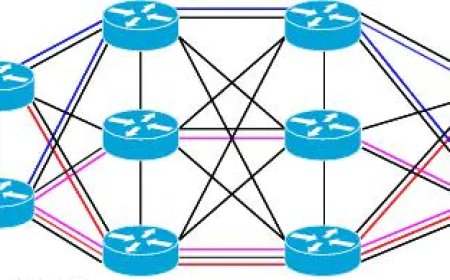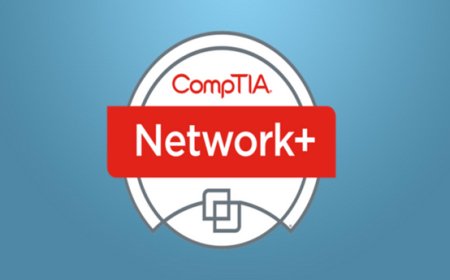Intrusion Detection And Prevention Systems (IDS&IPS) Explained
Intrusion Detection Systems (IDS) and Intrusion Prevention Systems (IPS) are very important to detect - analyze - prevent malicious activity.

Intrusion Detection System (IDS)
Intrusion detection is the process of monitoring a network or system for unauthorized access or malicious activity. IDS are designed to detect and alert on such activity in order to identify and respond to security incidents.
There are two main types of intrusion detection systems: network-based intrusion detection systems (NIDS) and host-based intrusion detection systems (HIDS). NIDS monitor network traffic to detect malicious activity, while HIDS monitor activity on individual host systems.
Intrusion detection is important for several reasons:
- It helps to detect and alert on security incidents in real-time, allowing organizations to respond quickly and minimize the impact of an attack.
- It can identify patterns of malicious activity that may not be detected by other security measures, such as firewalls or antivirus software.
- It can provide valuable forensic information that can be used to investigate security incidents and improve security defenses.
- It can be an important complement to other security measures such as firewalls, antivirus software, and penetration testing.
NETWORK-BASED INTRUSION DETECTION SYSTEM
NIDS is designed to monitor network traffic to detect and alert on malicious activity. NIDS typically work by analyzing network packets and comparing them to a set of predefined rules or patterns to identify known malicious activity.
General overview of how NIDS works:
- Packet Capture: NIDS captures network traffic by using specialized hardware or software to tap into the network and capture packets. This is done by either connecting to a SPAN port on a switch or by installing a network tap.
- Packet Inspection: NIDS inspects each packet to extract header and payload information such as IP addresses, ports, and protocols.
- Signature-based Detection: NIDS compares the extracted packet information against a set of predefined rules or patterns, known as signatures, to identify known malicious activity. Signatures are a set of criteria that match specific patterns of known bad traffic.
- Anomaly-based Detection: NIDS compares the captured network traffic against a learned or predefined "normal" behavior to detect any deviation from it. This way it can detect unknown or new types of attacks.
- Alert and Response: If NIDS detects suspicious activity, it generates an alert and sends it to an administrator or security operations center (SOC) for further analysis and response.
NIDS can be configured to operate in different modes such as promiscuous mode or inline mode, depending on the specific requirements of the organization.
NIDS can also be combined with other security measures such as firewalls, antivirus software, and IPS to provide more comprehensive network security.
HOST-BASED INTRUSION DETECTION SYSTEM
HIDS is designed to monitor activity on individual host systems, such as servers or desktop computers, in order to detect and alert on malicious activity. HIDS typically work by analyzing system and application logs, as well as system state information, to identify known malicious activity.
General overview of how HIDS works:
- Data Collection: HIDS collects data from various sources on the host system, such as system and application logs, system calls, and system state information. This is done by installing agent software on the host system.
- Data Analysis: HIDS analyzes the collected data to identify patterns of malicious activity by using predefined rules or patterns, known as signatures, or by using behavioral-based analysis.
- Signature-based Detection: HIDS compares the collected data against a set of predefined rules or patterns, known as signatures, to identify known malicious activity. Signatures are a set of criteria that match specific patterns of known bad behavior.
- Anomaly-based Detection: HIDS compares the collected data against a learned or predefined "normal" behavior to detect any deviation from it. This way it can detect unknown or new types of attacks.
- Alert and Response: If HIDS detects suspicious activity, it generates an alert and sends it to an administrator or SOC for further analysis and response.
HIDS can be combined with other security measures such as firewalls, antivirus software, and IPS to provide more comprehensive security.
Additionally, HIDS can be used to monitor specific system resources, such as the registry or file system, in order to detect malware or unauthorized changes.
Intrusion Prevention System (IPS)
Intrusion prevention is the process of identifying and blocking malicious activity in real-time, before it can cause harm to a network or system. IPS are designed to detect and prevent security incidents by analyzing network traffic or system activity and taking action to stop malicious activity.
There are two main types of intrusion prevention systems: network-based intrusion prevention systems (NIPS) and host-based intrusion prevention systems (HIPS). NIPS monitor network traffic to detect and prevent malicious activity, while HIPS monitor activity on individual host systems.
Intrusion prevention is important for several reasons:
- It helps to detect and block security incidents in real-time, allowing organizations to prevent damage and minimize the impact of an attack.
- It can identify patterns of malicious activity that may not be detected by other security measures, such as firewalls or antivirus software.
- It can provide valuable forensic information that can be used to investigate security incidents and improve security defenses.
- It can be an important complement to other security measures such as firewalls, antivirus software, and intrusion detection systems (IDS).
*****Intrusion prevention is not a replacement for other security measures, it should work together with other security tools and should be a part of a comprehensive security.
NETWORK-BASED INTRUSION PREVENTION SYSTEM
NIPS is designed to monitor network traffic in order to detect and prevent malicious activity. NIPS typically work by analyzing network packets and comparing them to a set of predefined rules or patterns to identify known malicious activity.
General overview of how NIPS works:
- Packet Capture: NIPS captures network traffic by using specialized hardware or software to tap into the network and capture packets. This is done by either connecting to a SPAN port on a switch or by installing a network tap.
- Packet Inspection: NIPS inspects each packet to extract header and payload information such as IP addresses, ports, and protocols.
- Signature-based Detection: NIPS compares the extracted packet information against a set of predefined rules or patterns, known as signatures, to identify known malicious activity. Signatures are a set of criteria that match specific patterns of known bad traffic.
- Anomaly-based Detection: NIPS compares the captured network traffic against a learned or predefined "normal" behavior to detect any deviation from it. This way it can detect unknown or new types of attacks.
- Prevention: NIPS takes action to prevent malicious activity from occurring. This can include dropping packets, resetting connections, or blocking traffic from specific IP addresses.
- Alert and Response: NIPS can also generate alerts and provide information about the incident to an administrator or security operations center (SOC) for further analysis and response.
HOST-BASED INTRUSION PREVENTION SYSTEM
HIPS is designed to monitor activity on individual host systems, such as servers or desktop computers, in order to detect and prevent malicious activity. HIPS typically work by analyzing system and application logs, as well as system state information, to identify known malicious activity.
General overview of how HIPS works:
- Data Collection: HIPS collects data from various sources on the host system, such as system and application logs, system calls, and system state information. This is done by installing agent software on the host system.
- Data Analysis: HIPS analyzes the collected data to identify patterns of malicious activity by using predefined rules or patterns, known as signatures, or by using behavioral-based analysis.
- Signature-based Detection: HIPS compares the collected data against a set of predefined rules or patterns, known as signatures, to identify known malicious activity. Signatures are a set of criteria that match specific patterns of known bad behavior.
- Anomaly-based Detection: HIPS compares the collected data against a learned or predefined "normal" behavior to detect any deviation from it. This way it can detect unknown or new types of attacks.
- Prevention: HIPS takes action to prevent malicious activity from occurring. This can include blocking or terminating processes, closing network connections, or quarantining files.
- Alert and Response: HIPS can also generate alerts and provide information about the incident to an administrator or security operations center (SOC) for further analysis and response.
What's Your Reaction?

























